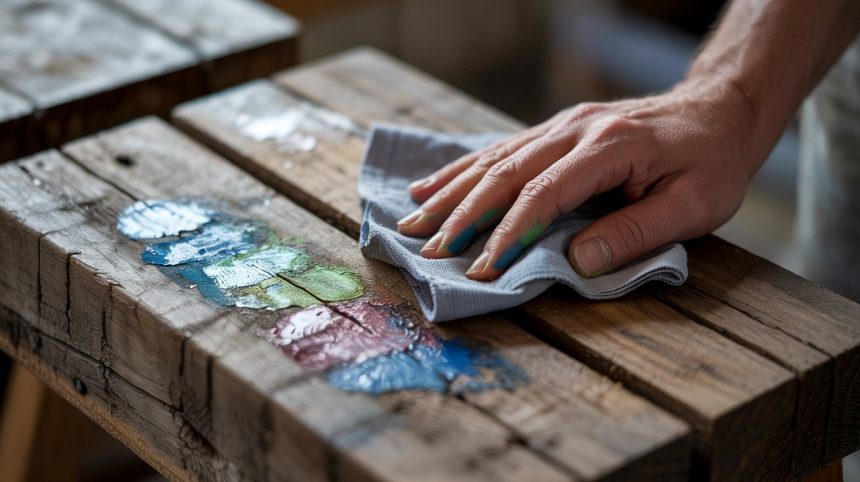Are you struggling with acrylic paint marks on your wooden furniture or craft projects? I know how frustrating it can be when spots of paint stick to surfaces where they don’t belong.
Acrylic paint is known for its strong bond with wood, making it hard to remove once it dries. But don’t worry – there are several ways to clean it off without ruining your wooden items.
In this blog, I’ll show you six tested methods for removing acrylic paint from wood surfaces. From simple soap and water for fresh spills to more focused methods for old stains, you’ll find a solution that works for your specific needs.
What is Acrylic Paint?
Acrylic paint is a fast-drying paint made with pigment mixed in an acrylic polymer solution. It has become popular among artists and crafters because of its useful qualities:
- Water-based and easy to clean up when wet
- Dries quickly compared to oil paints
- Forms a water-resistant layer when dry
- Sticks well to many surfaces, including wood
- Can be thinned with water or thickened with mediums
- Maintains color brightness over time
Why Acrylic Paint Sticks So Well to Wood?
Acrylic paint forms a strong bond with wood because of the way the two materials interact. The porous nature of wood allows the paint to seep into tiny openings in the surface, creating a physical lock once dried.
As acrylic paint dries, it forms a plastic-like film that adheres tightly to the wood grain. This polymer-based paint contracts slightly as it cures, which helps it adhere to the wood surface with remarkable strength.
Untreated and raw wood is even more likely to form an almost permanent bond with acrylic paint. The paint becomes deeply absorbed into the wood fibers, making it much harder to remove than from sealed or finished wood surfaces.
When fully cured, acrylic paint becomes water-resistant, which is great for art but challenging when you need to clean up mistakes. This water-resistance means that simple water won’t dissolve the paint once it has set.
Why It’s Important to Choose the Right Technique?
Selecting the best method to remove acrylic paint from wood can mean the difference between success and damage. Using too harsh a method on delicate wood can lead to scratches, discoloration, or even warping of the wood surface.
Fresh paint spills respond well to gentle methods like soap and water, while dried paint requires stronger approaches. Matching the right removal technique to how long the paint has been on the wood will save you time and effort.
Different wood types and finishes have varying sensitivity to chemicals and abrasion. Antique furniture or valuable wooden items need much gentler treatment than rough workshop surfaces or outdoor wood projects.
Using the wrong paint removal method might seem to work at first, but could cause long-term damage. Some harsh chemicals can seep into wood grain and cause problems later, such as interfering with new finishes or stains.
6 Techniques to Remove Acrylic Paint from Wood
Here we’ll explore six different methods to remove unwanted acrylic paint from wooden surfaces. Each technique varies in strength and works best for specific situations, from fresh spills to old, dried paint spots.
Technique 1: Using Soap and Water for Fresh Acrylic Paint
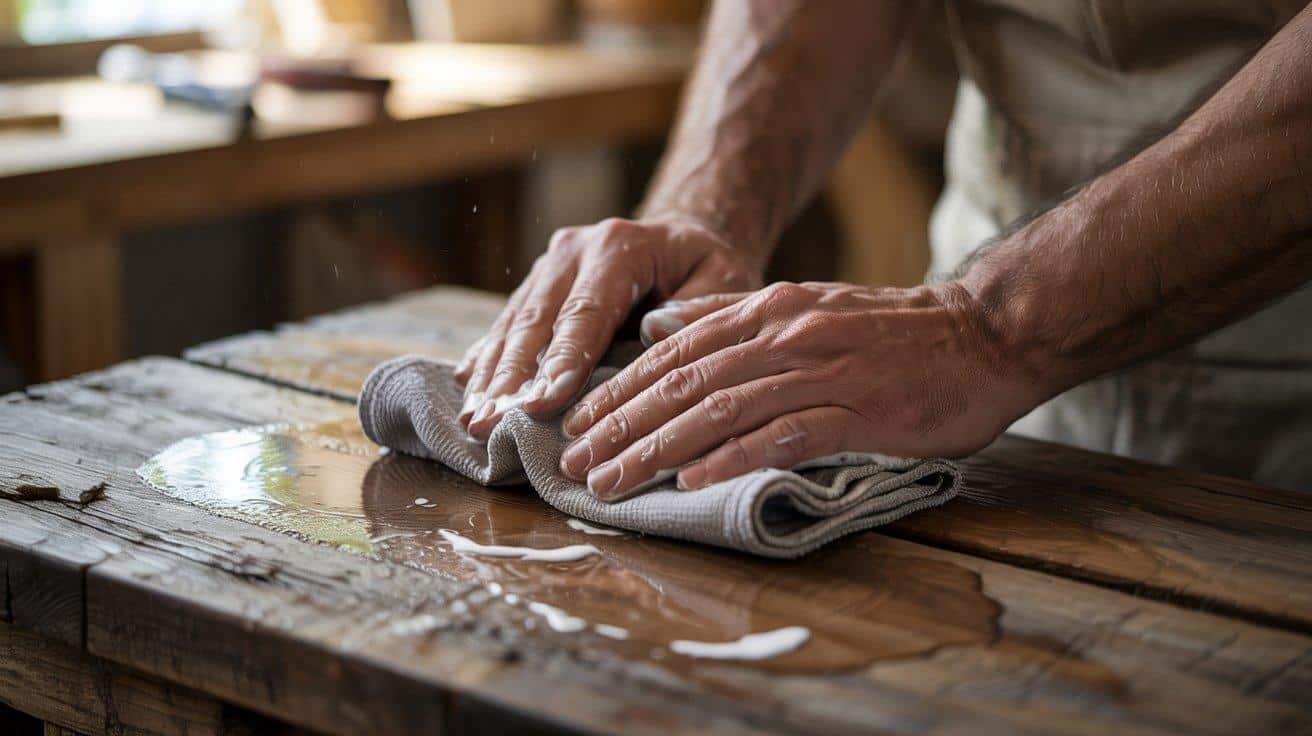
For wet or fresh acrylic paint spills, soap and warm water often do the job well. This method is gentle on the wood and safe to use on most finishes.
The soap breaks down the paint while it’s still wet, making it easier to wipe away. This works best when the paint hasn’t had time to dry and bond with the wood.
Steps to clean fresh acrylic paint with soap and water:
- Mix mild dish soap with warm water until slightly sudsy
- Dip a soft cloth or sponge into the soapy water
- Gently wipe the paint spot using small circular motions
- Rinse with clean water using a fresh cloth
- Dry the area completely with a towel
Technique 2: Rubbing Alcohol for Dried Acrylic Paint
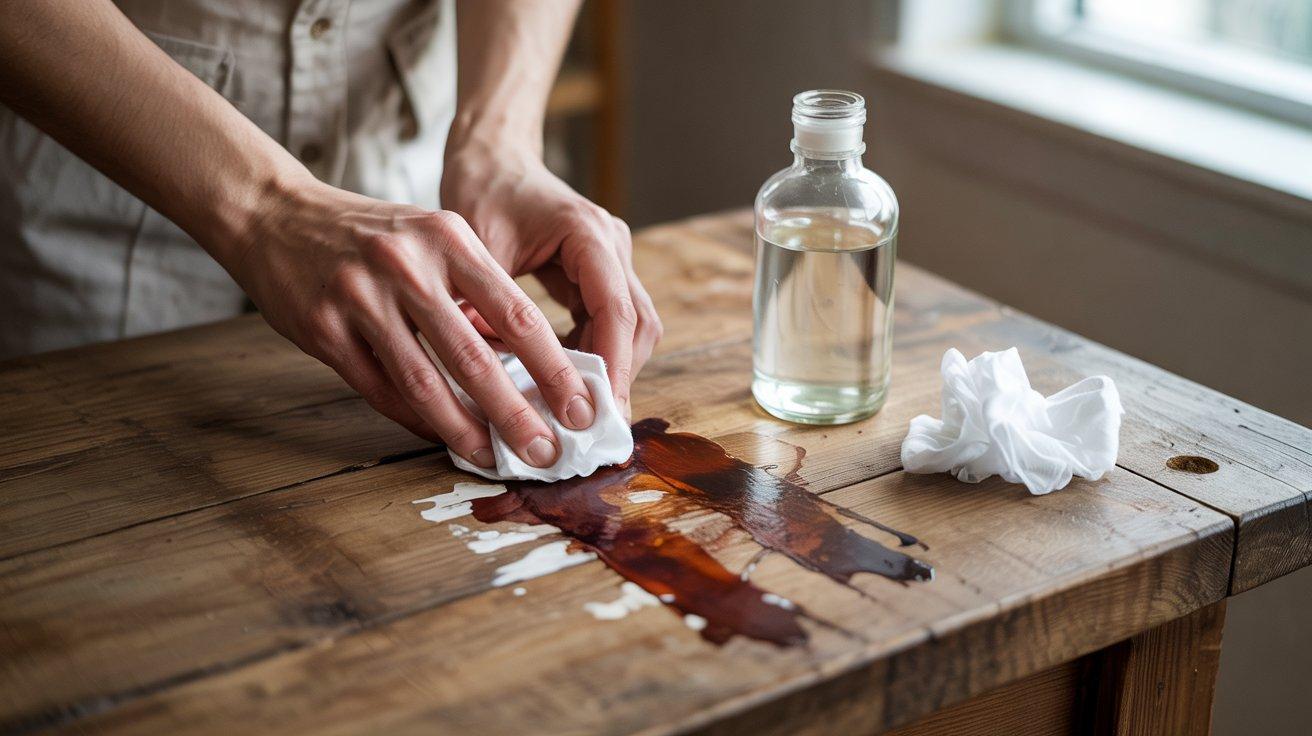
Rubbing alcohol (isopropyl alcohol) is useful for dried acrylic paint as it helps break down the dried polymer. It’s stronger than soap but still fairly safe for most wood finishes when used with care.
This method works because alcohol can dissolve the acrylic binders that make the paint stick to surfaces. It’s a good middle-ground solution before trying harsher methods.
Steps for using rubbing alcohol:
- Pour some rubbing alcohol onto a clean cloth
- Press the cloth against the paint spot for 30 seconds
- Gently rub in a circular motion to lift the paint
- Use a plastic scraper to help lift stubborn spots
- Wipe clean with water and dry thoroughly
Technique 3: Using Baking Soda and Water for Gentle Scrubbing
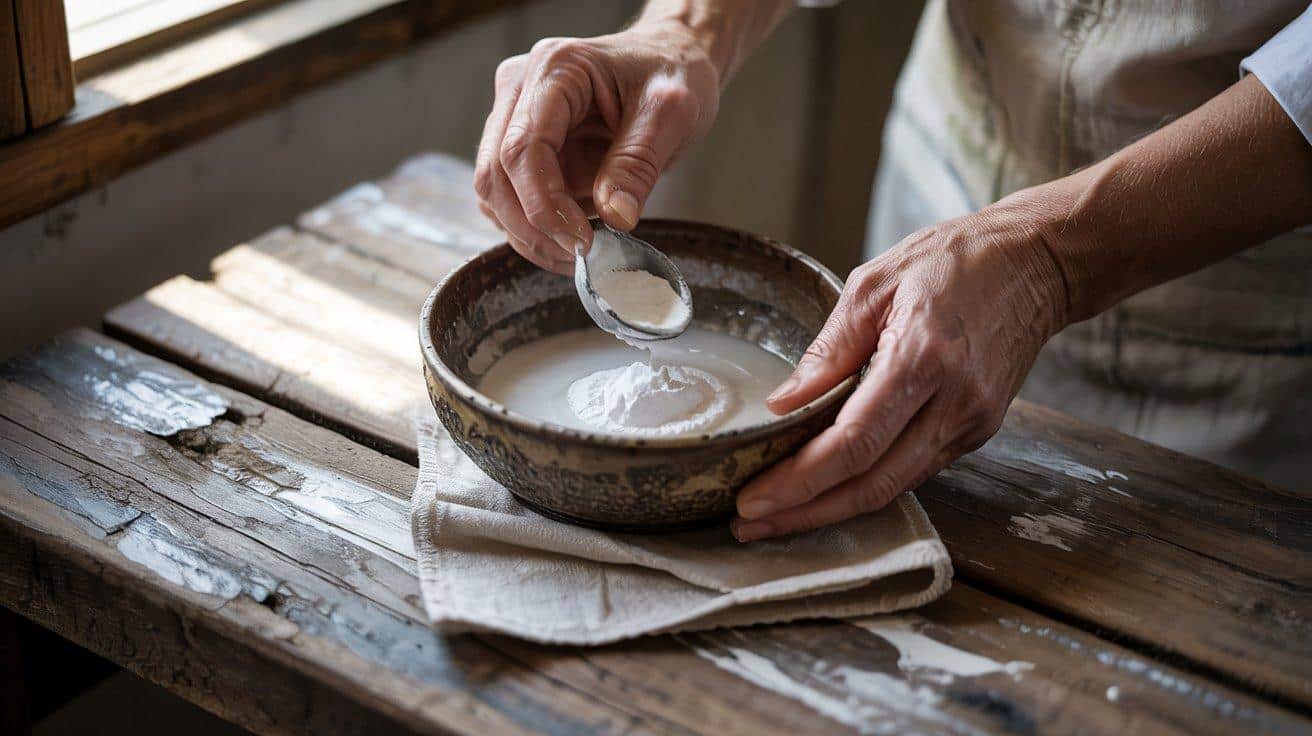
Baking soda creates a mild abrasive paste that can help lift paint without harsh chemicals. This method is good for those who prefer non-toxic cleaning options.
The slightly rough texture of baking soda helps break the bond between paint and wood while being gentle enough not to scratch most finishes.
Steps to use baking soda paste:
- Mix 3 parts baking soda with 1 part water to form a paste
- Apply the paste to the paint spots with a soft cloth
- Let it sit for 5-10 minutes to soften the paint
- Gently scrub with a soft-bristled brush or cloth
- Wipe clean with a damp cloth and dry the area
Technique 4: Sanding the Paint Off (For Tougher Stains)
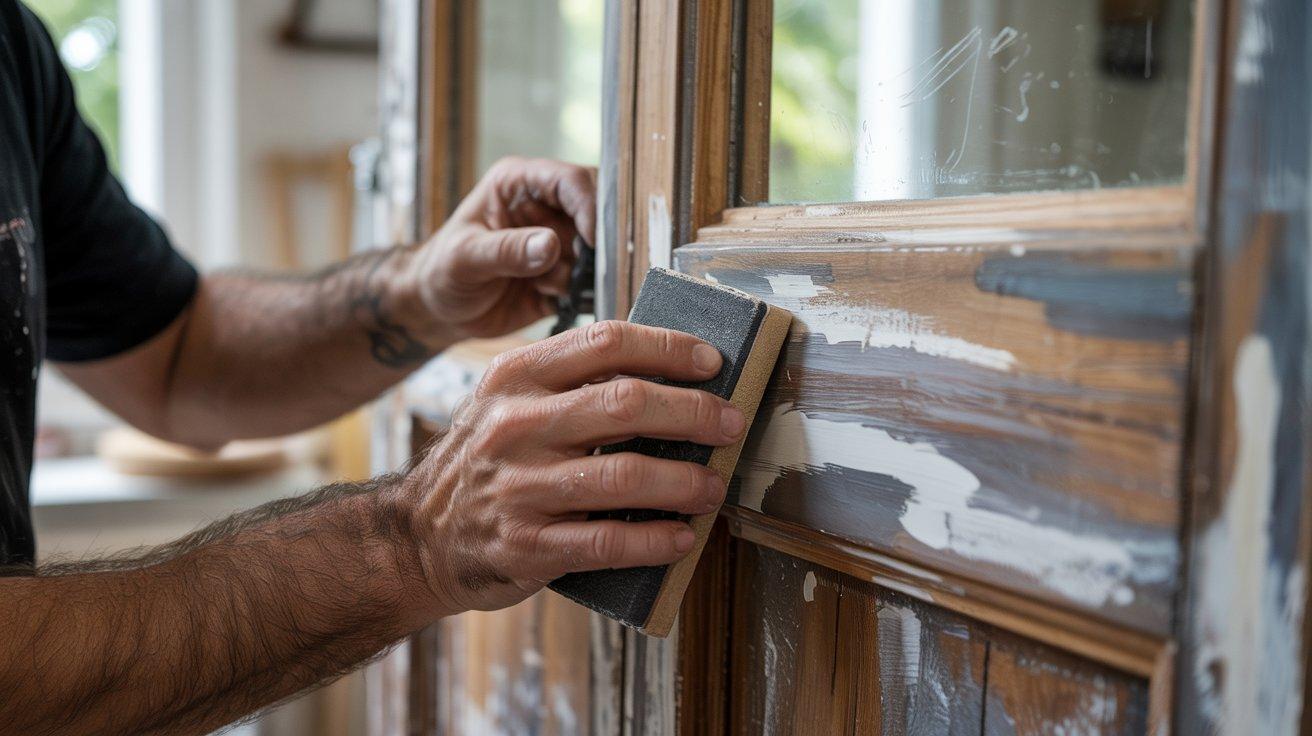
When other methods fail, sanding can remove stubborn acrylic paint. This is a more direct approach but requires careful work to avoid damaging the wood.
Sanding works by physically removing the top layer where the paint has bonded. This method is best for unfinished wood or when you plan to refinish the surface anyway.
Guide for sanding acrylic paint:
- Start with fine-grit sandpaper (180-220 grit)
- Sand in the direction of the wood grain only
- Use light pressure and check progress often
- Wipe away dust with a tack cloth between sanding
- Move to a finer grit (320-400) for final smoothing
- Clean the surface thoroughly after sanding
Technique 5: Using a Paint Remover or Stripper
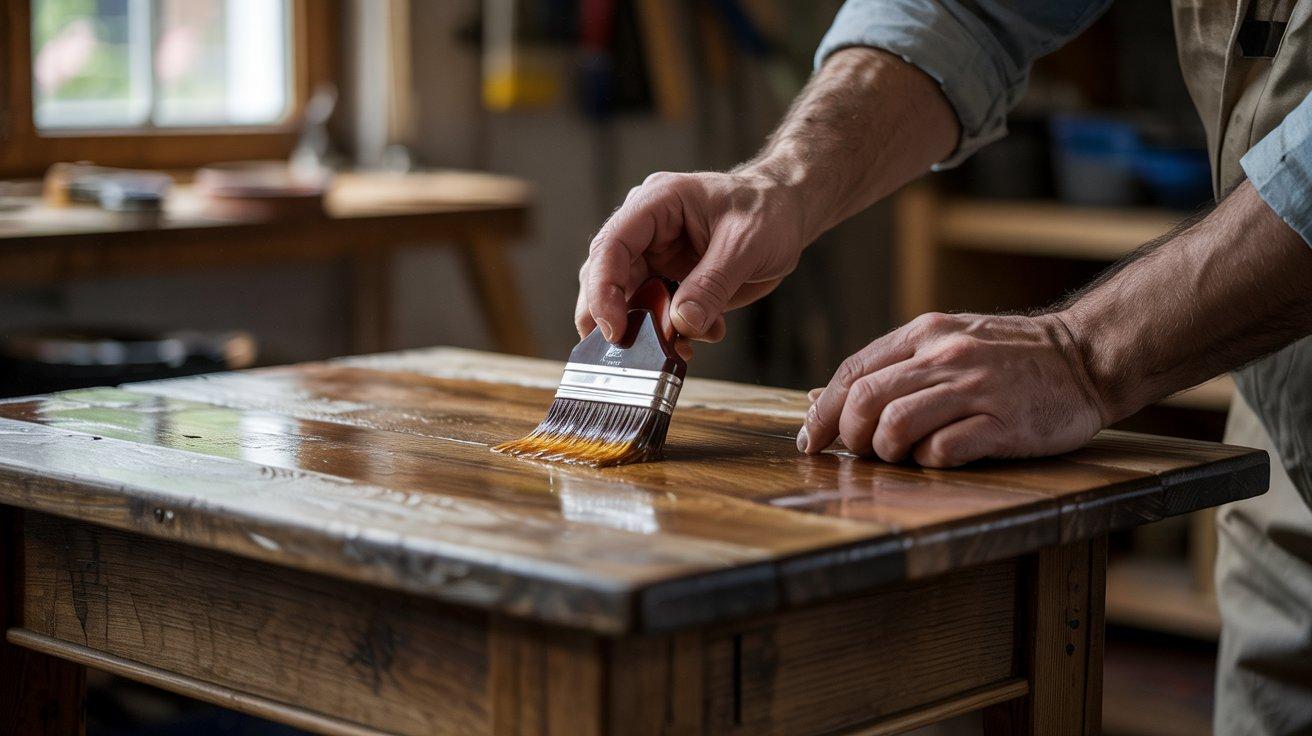
Commercial paint removers are useful for large areas or very stubborn paint. These chemical solutions break down the paint bonds, making removal easier.
This method is more intense and should be used when gentler methods have failed. Always test in a hidden spot first to make sure it won’t harm your wood.
Steps for using paint remover:
- Work in a well-ventilated area and wear gloves
- Apply a small amount of paint remover with a brush
- Let it sit according to product instructions (usually 15-30 minutes)
- Gently scrape the softened paint with a plastic scraper
- Clean the area with mineral spirits or as directed
- Allow the wood to dry completely before refinishing
Technique 6: Applying a Heat Gun for Acrylic Paint Removal
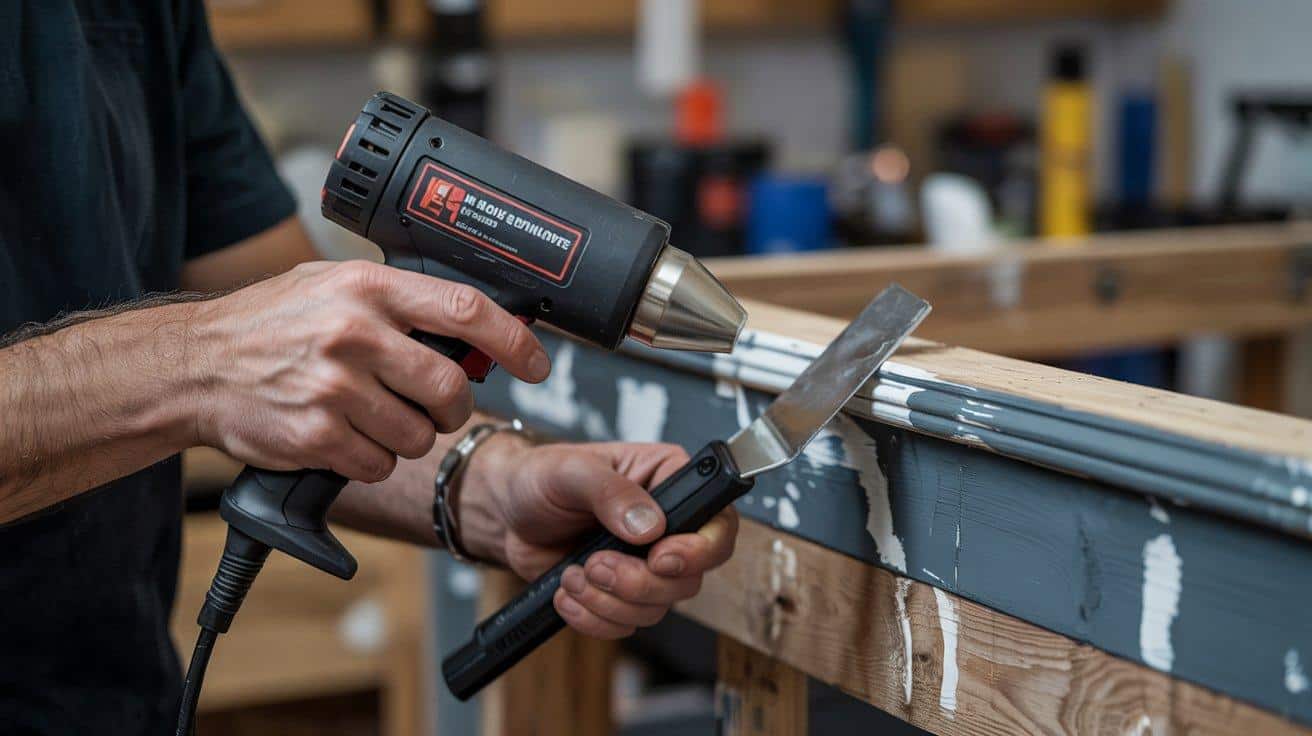
A heat gun softens dried acrylic paint, making it possible to scrape it off. This method uses heat instead of chemicals to loosen the paint bond.
Heat works by making the acrylic polymers more flexible, thus easier to remove. This can be a good option for thick layers of paint or when you want to avoid chemicals.
How to use a heat gun:
- Hold the heat gun 3-4 inches from the paint
- Move it back and forth to heat the paint evenly
- Watch for the paint to bubble or soften
- Use a scraper to lift the paint while still warm
- Work in small sections to keep the paint soft
Additional Tips for Protecting Wooden Surfaces During Removal
When removing acrylic paint from wood, protecting the surface is just as important as getting the paint off. Here are some ways to keep your wood safe:
- Always test any method in a hidden area first
- Use the most gentle method that will work for your situation
- Place towels around your work area to catch drips
- Avoid letting any solution soak into the wood for too long
- Keep water use to a minimum with finished woods
Conclusion
Taking off acrylic paint from wood doesn’t have to be a major problem. The key is to match the right method to your situation – soap and water for fresh spills, or stronger methods like alcohol, baking soda, or heat for dried paint.
Remember to start with the most gentle method first and work your way up if needed. Always test in a hidden spot before treating a larger area.
What matters most is being careful with your wooden items. With the right approach, you can remove paint while keeping the wood in good shape.
Try these methods next time you have a paint spill, and you might be surprised at how well they work.
What paint removal tricks have worked for you in the past?
Frequently Asked Questions
Can Acrylic Paint Be Removed from Painted or Stained Wood?
Yes, but with extra care. Use gentler methods first, as harsh techniques might remove the underlying paint or stain along with the acrylic.
How Do I Fix Wood Discoloration After Removing Acrylic Paint?
Light sanding, followed by a wood polish or oil, can help restore the color. For severe cases, you might need to apply a matching wood stain.
Is It Possible to Remove Acrylic Paint from Wood Carvings or Detailed Areas?
Yes, use a soft toothbrush with rubbing alcohol or paint remover applied precisely to reach tight spaces without damaging details.

